Test Drive: Porsche 911 Turbo (997)|The Origin of Turbo’s Dual Nature
公開日:2023.12.22
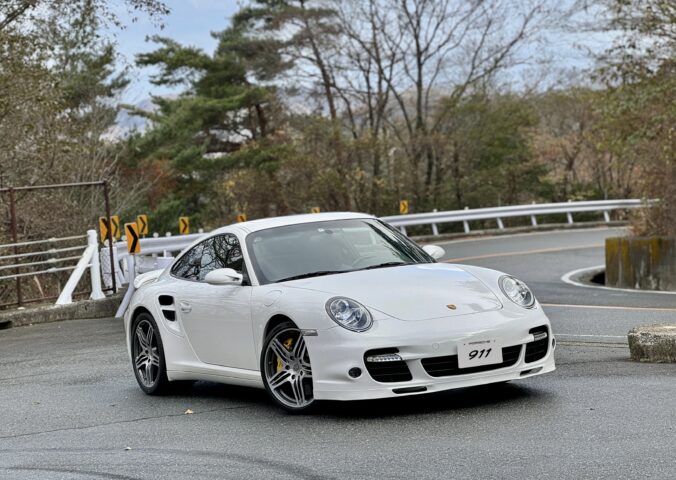
コンテンツ
Following my test drive of the 987 Cayman, I had the opportunity to drive the 997-generation 911 Turbo, so I’d like to share my report.
Porsche 911 Turbo (997)
The 997-generation Porsche 911 marked a break from the 996’s teardrop headlights, deliberately returning to the classic round headlights reminiscent of the air-cooled era.
I vividly remember when it was first released. Its design evolved from the 993, featuring a nicely rounded body that strongly retained the silhouette and spirit of the air-cooled Porsche. Back then, it was far beyond my reach, so I often watched 911s drive by on the streets with longing.
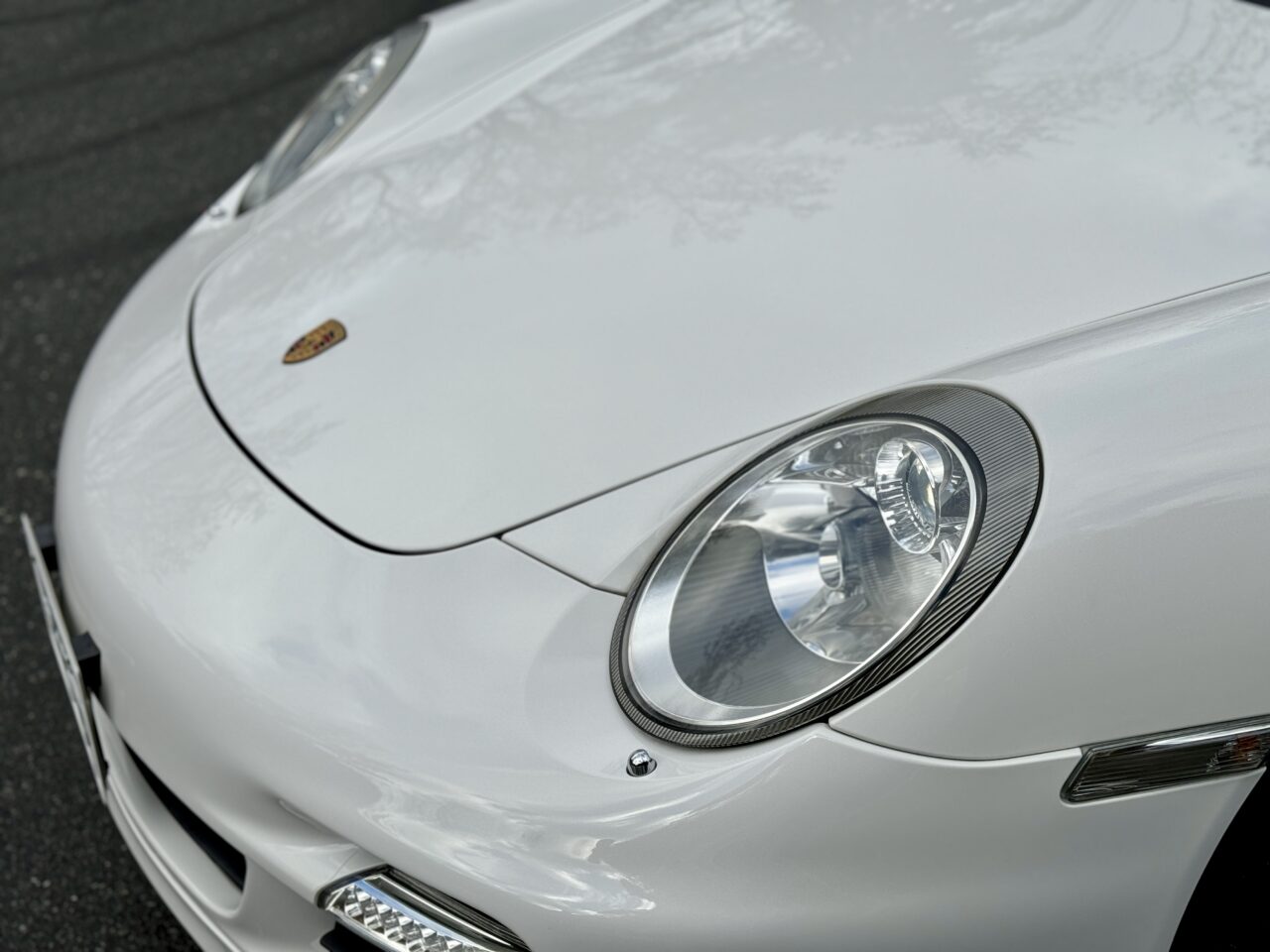
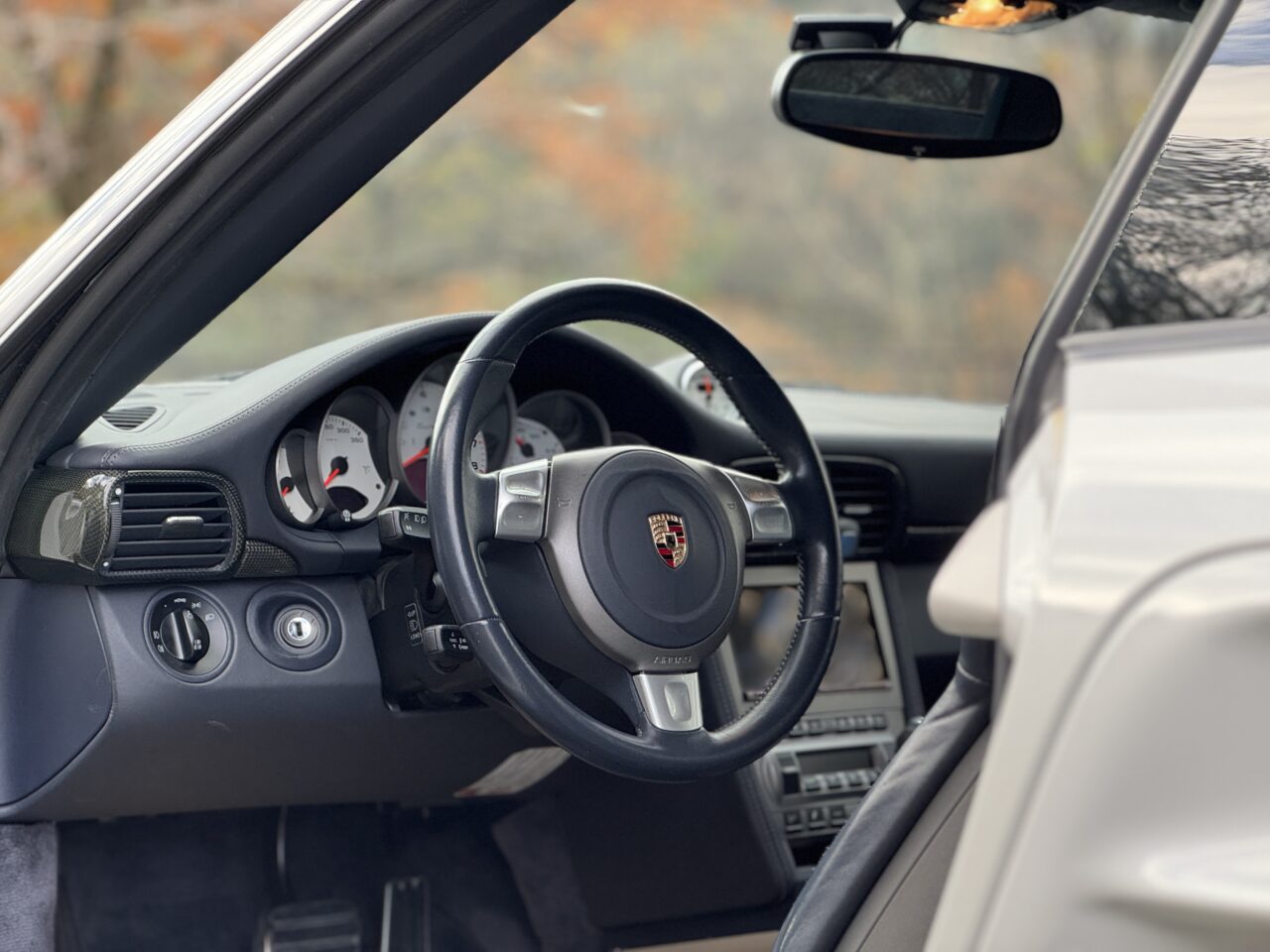
This 911 is the top-tier Turbo model of the 997 generation. Its engine is a 3.6L flat-six based on the legendary GT1 crankcase.
It boasts specs of 480PS at 6,000rpm and 63.2kg·m torque from 1,950 to 5,000rpm. The manual transmission version does 0-100 km/h in 3.9 seconds, while this test car’s Tiptronic S manages an astonishing 3.7 seconds. For reference, the latest 992 GT3 clocks 3.4 seconds, so you can appreciate just how fast this is.
It’s equipped with the rare PCCB brakes and the Sport Chrono package, making it a truly special specimen.
This Is Porsche’s “Turbo”
For Porsche, the name “Turbo” is more than just an engine feature. It carries a special meaning and is reserved exclusively for the highest-grade models.
Opening the door and sliding in, you’re greeted by luxurious seats with thick cushions. The seats in Porsches of this era are notably soft. Especially in this Turbo, the seating comfort is excellent, promising minimal fatigue even on long drives.
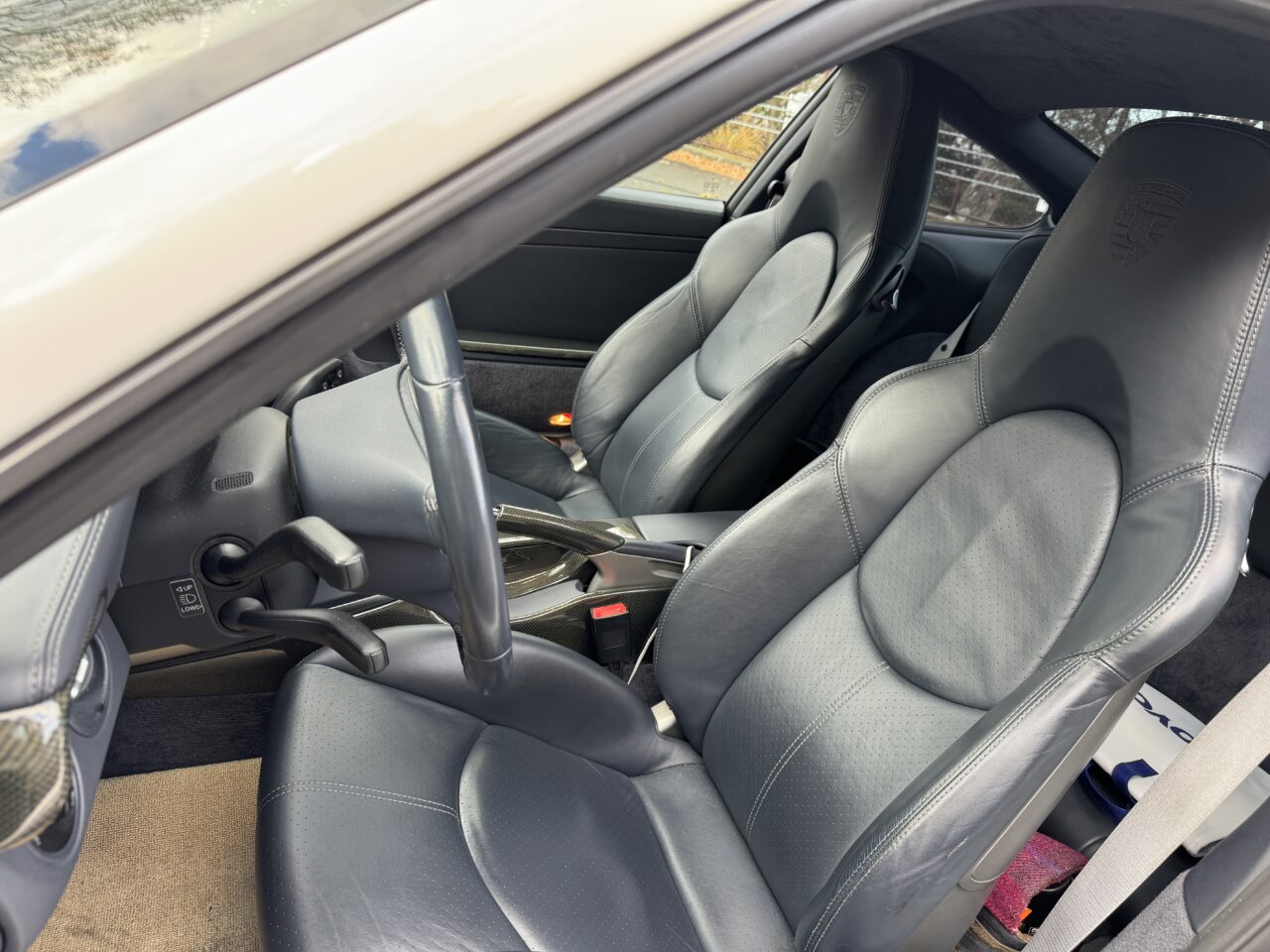
Starting the engine and setting off, you immediately sense the distinctly “Turbo” dense character. The ride is comfortable, with a softness that still has a firm core. It’s what I call a “Sanuki Udon-style” suspension—highly adaptable to road and environmental conditions.
And the Tiptronic transmission deserves special mention. As the most refined Tiptronic ever fitted to a 911, it’s superbly crafted. There’s no shift shock, and it operates incredibly smoothly. While its shift speed can’t quite match the PDK, it never feels frustrating.
Using the plus and minus buttons on the steering wheel to shift manually while focusing on steering through winding roads is an absolute joy.
Downshifts don’t feature rev-matching blips, but the control seamlessly matches engine speed with minimal shift shock, a huge leap from the early Tiptronic units of the 964 era.
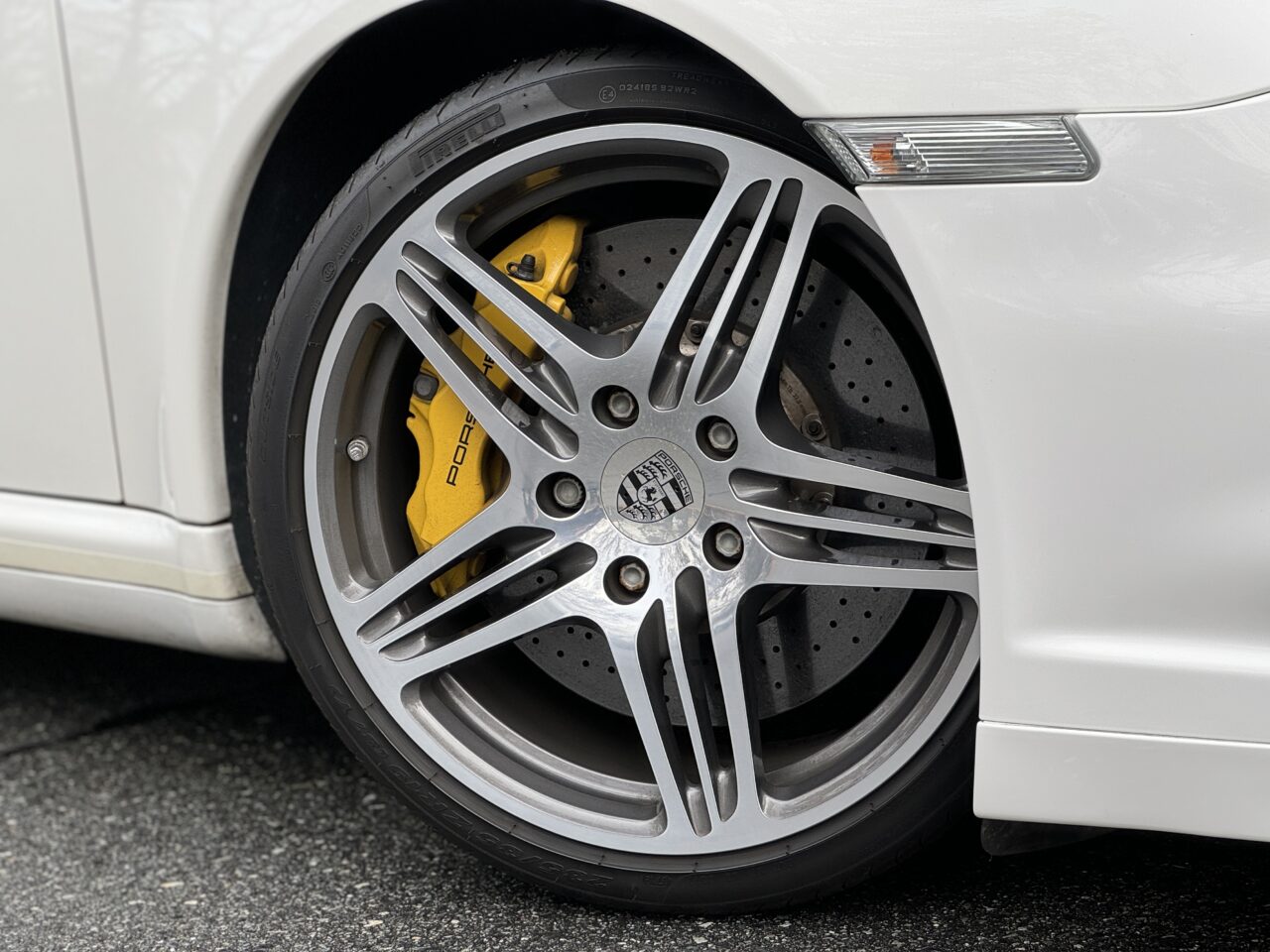
Rare PCCB-equipped model
The ride quality is excellent. Although the tires were a bit old, causing some unnecessary roughness on coarse surfaces, replacing them would surely enhance the ride. Like the 987 Cayman I drove before, there’s more noise from the suspension compared to modern Porsches, but it’s never unpleasant.
Despite this car having over 70,000 km, I couldn’t detect any significant suspension wear. Compared to the latest 992 or 718 models, the differences felt more about model characteristics than wear and tear. Recently, I learned from a dealer that PASM-equipped suspensions, being electronically controlled, tend to show less wear than conventional suspensions.
The Engine’s Dual Personality
When cruising gently around 3,000 rpm, it feels like driving a large-displacement naturally aspirated engine, gracefully flowing through winding roads. The abundant torque comes without strange turbo lag or torque fluctuations, making it very easy to drive. This engine likely causes no stress even in relaxed city driving.
But when you switch to Sport mode, manually downshift to 3rd or 2nd gear, and open the throttle, the 911 Turbo’s engine transforms. Between 3,000 and 4,000 rpm, you hear a clear “whoosh!” from the rear—distinct turbine and intake sounds—as the engine enters battle mode.
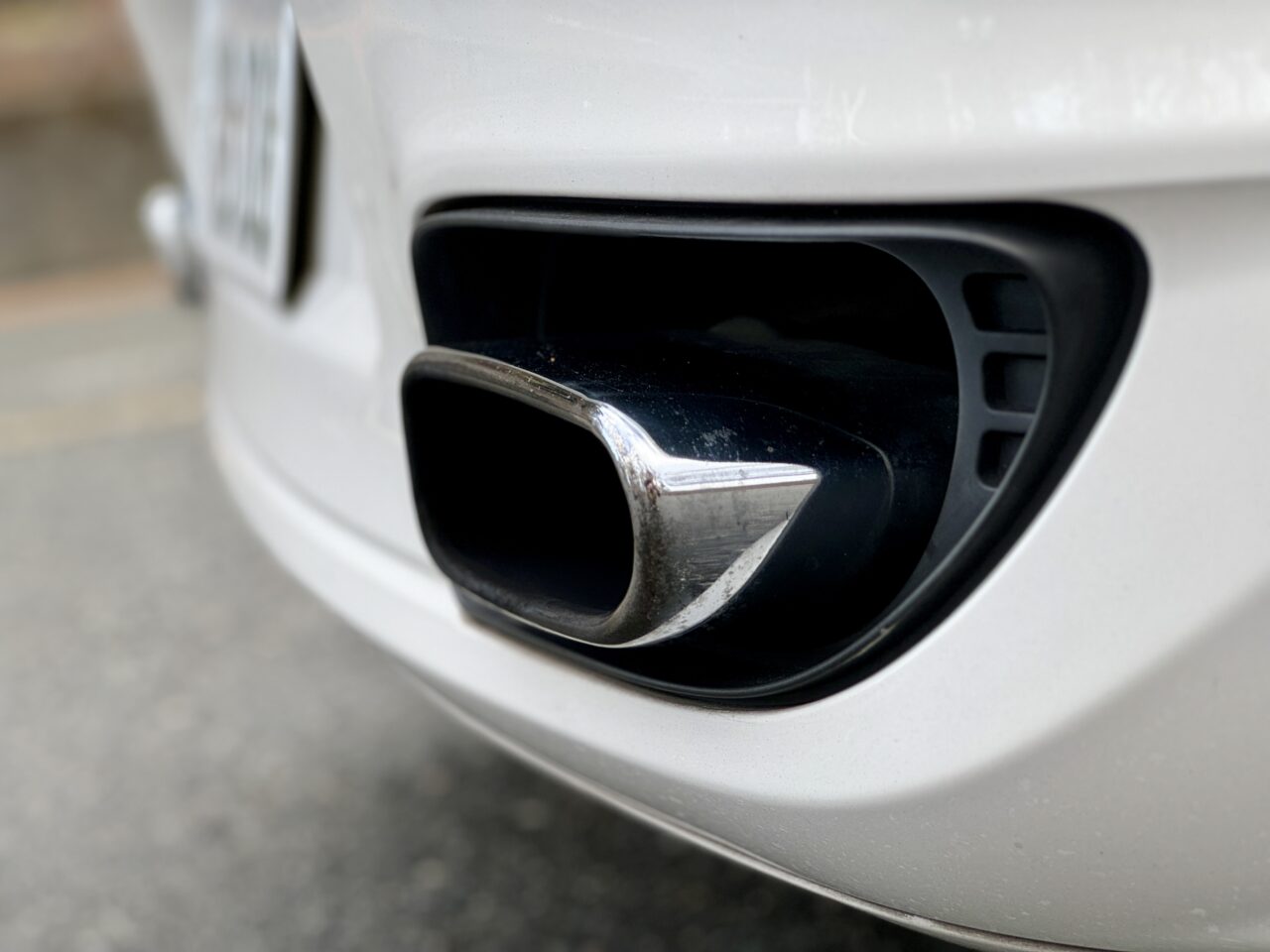
It’s as if the 911 has transformed. The owner told me this “whoosh” sound feels like a signal that the 911 Turbo is “ready.” Indeed, from that point on, the throttle response and power delivery are intense.
With the owner’s permission, I pushed the accelerator hard, and the full-throttle acceleration was fierce—unbelievable for a car over a decade old. I believe even many modern Porsches can’t match this level of acceleration. Plus, the engine revs incredibly smoothly. I was so surprised by how quickly the tach needle surged toward the redline that I instinctively eased off the throttle.
This sensation is no exaggeration—it closely resembles the feel of a GT3 engine.
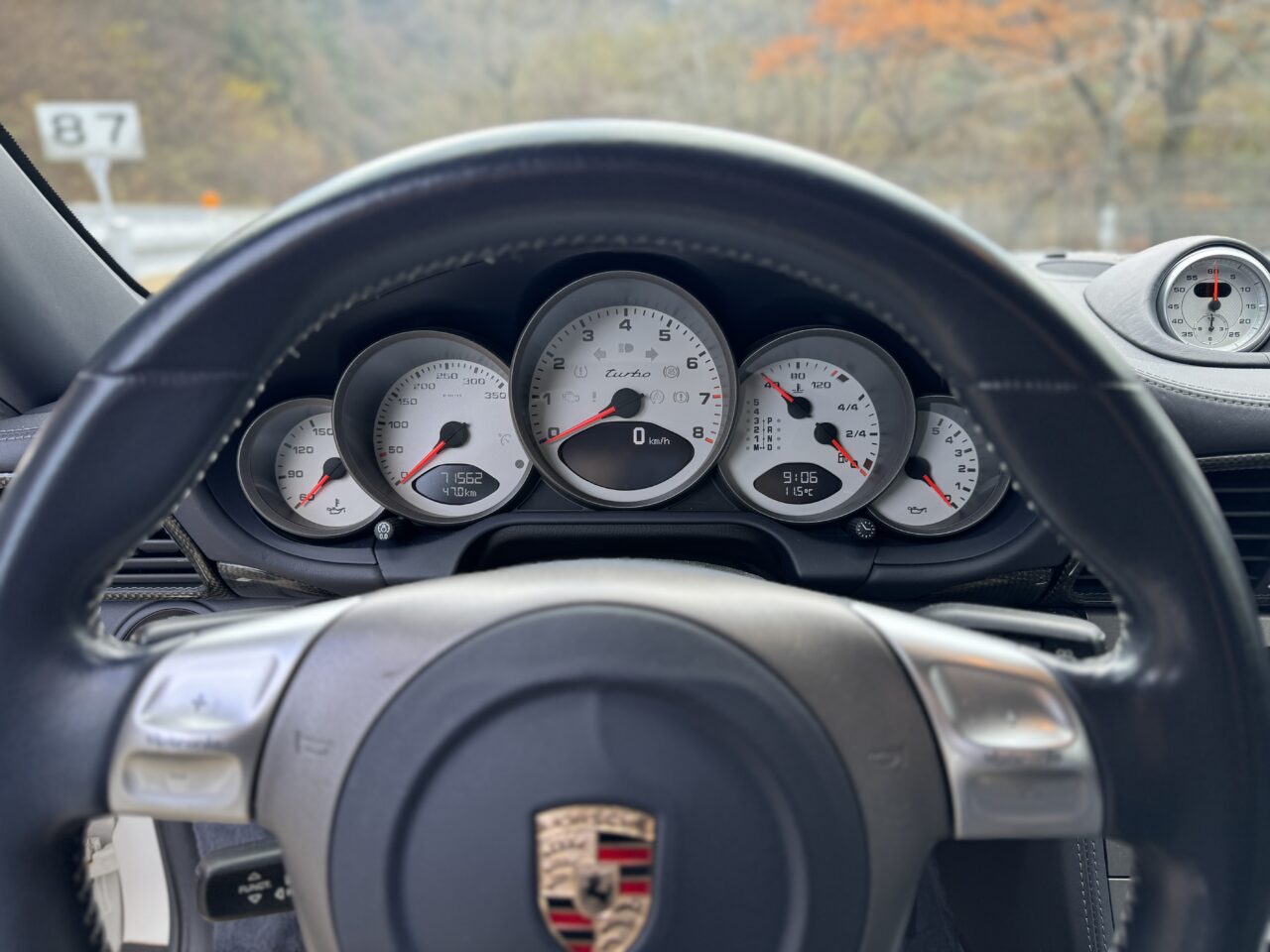
GT3 engines of any generation accelerate their tachometer needle faster as they approach the redline. However, this Turbo’s engine doesn’t accelerate the needle’s speed; it starts off fast from the get-go. The tach needle moves quickly right from the start, rushing straight to the redline. This is the hallmark of an engine descended from the GT1 lineage. This alone captivated me deeply.
Four-Wheel Drive That Doesn’t Feel Like It
As I rev the engine and tackle winding roads, I suddenly realize I’ve completely forgotten this is a turbocharged, four-wheel-drive car.
Driving is that enjoyable, making me want to keep pushing harder. Once you get used to the brutal stopping power of the PCCB brakes and sync with this 911 Turbo, the fun only increases.
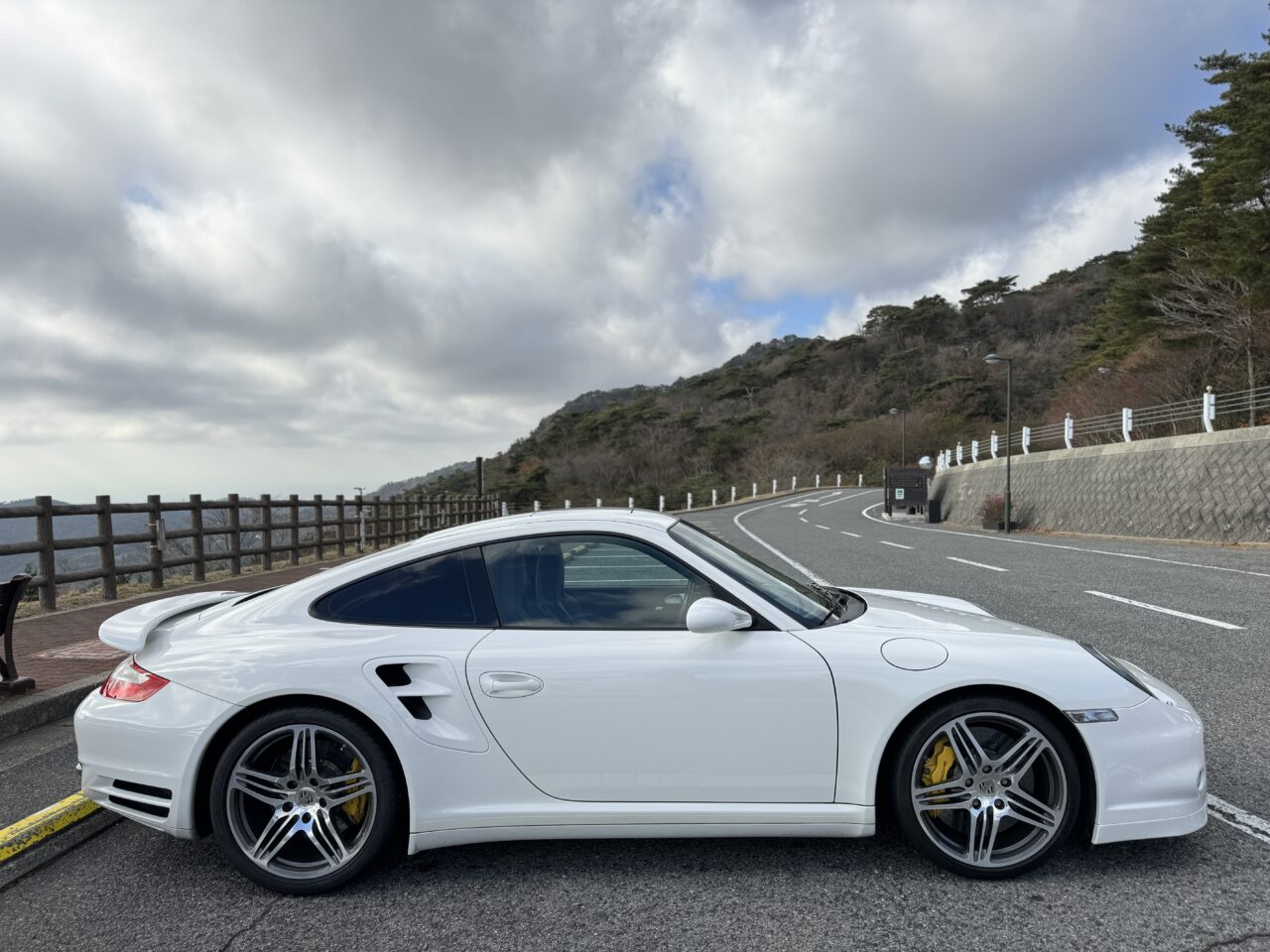
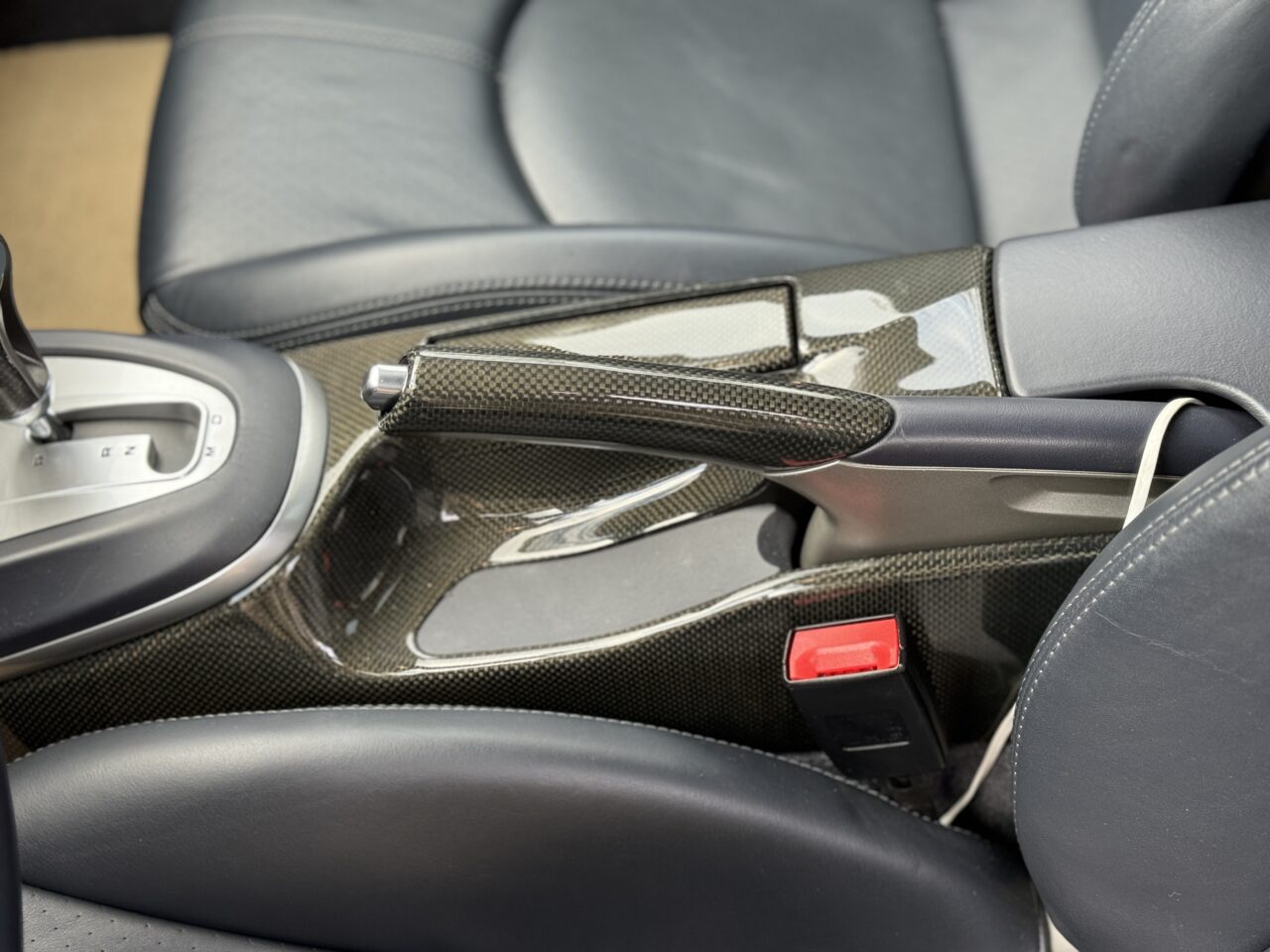
Carbon interior
It’s hard to believe this is the same car I was gently cruising in earlier. The typical four-wheel-drive feel or any negative heaviness is almost nonexistent. The faster I push, the more it feels like I’m driving a rear-engine, rear-wheel-drive 911. It even makes me wonder if my 991 Carrera 4 GTS at home feels more like a “Turbo.”
Overall Impression
I truly think this 911 is a wonderfully balanced machine.
The harmony between the Tiptronic transmission and engine is outstanding, just as I’ve long said.
While driving a manual is fun in its own right, it probably suits naturally aspirated models better. For this Turbo, I highly recommend the Tiptronic.
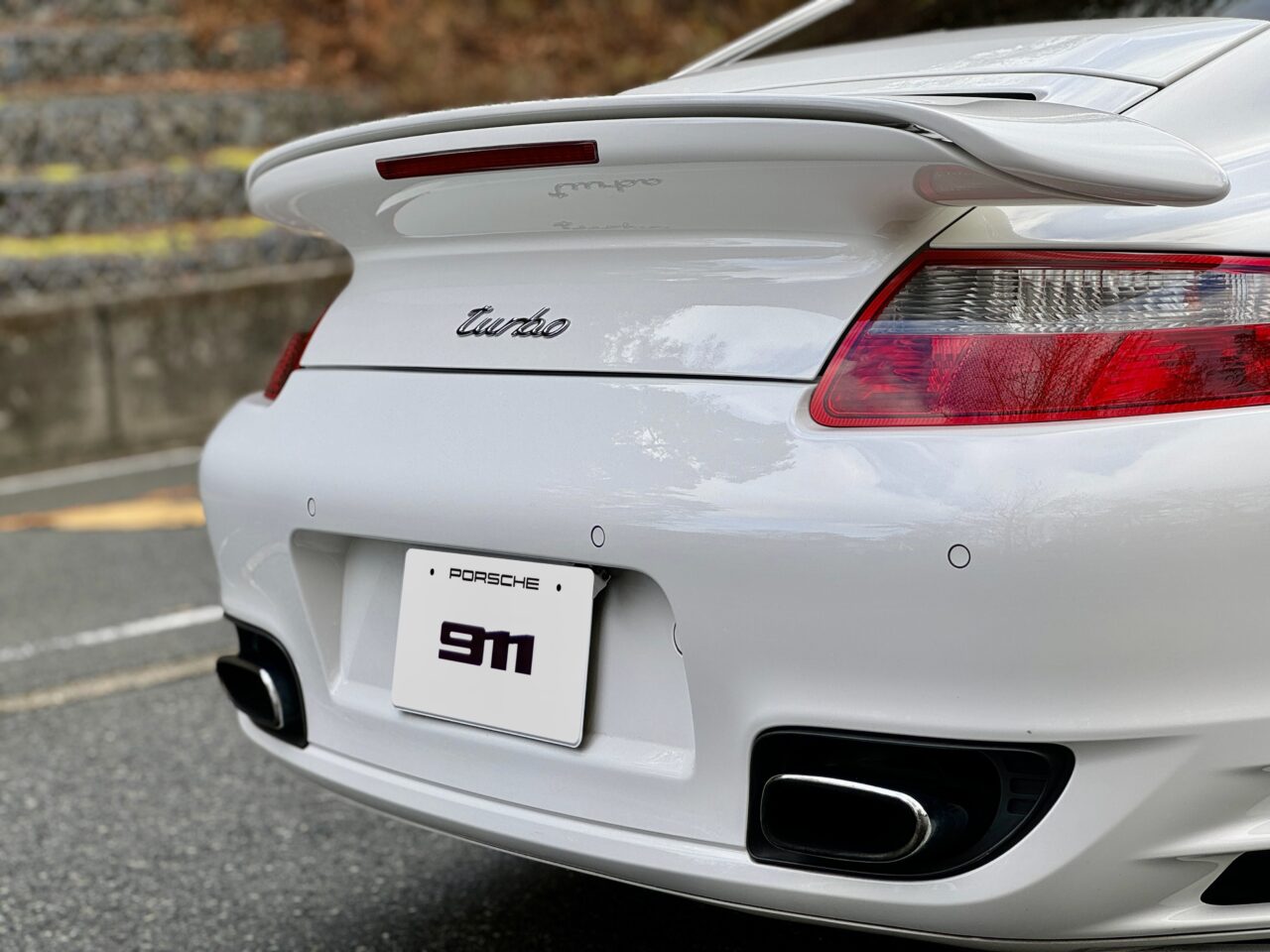
When I owned a Panamera Turbo, I often said Porsche’s Turbos are truly “Jekyll and Hyde.”
They possess dual personalities: capable of gentle cruising yet able to deliver GT3-level performance when desired. On top of that, they offer flexibility and comfort for everyday driving.
Personally, this 911 is honestly a car I want.
There’s no doubt it’s now added to my list of 911s I hope to own someday after this test drive.
このブログが気に入ったらフォローしてね!


Comment ( 0 )
Trackbacks are closed.
No comments yet.